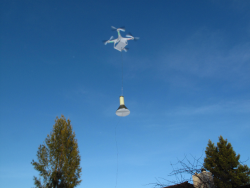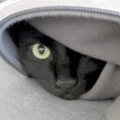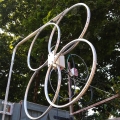n6gn
About
- Username
- n6gn
- Joined
- Visits
- 5,482
- Last Active
- Roles
- Member
- Points
- 31
-
External GNSS-disciplined rubidium input?
I know very little about the TDoA algorithm but I suspect both @jks and @Christoph are correct. Between the limited bandwidth and especially ionospheric propagation, typical Kiwi clock imperfection probably does not become an issue.
For an appreciation of this, you are welcome to examine the phase of one of NIST's transmitters received via a visual line-of-sight 20km path and displayed on a Kiwi having a ~.1 ppb (1e-10) GPS-disciplined external clock:
and by a different 'stock' GPS-corrected Kiwi at the same distance and also not receiving via the ionosphere:
Then have a look at a time/frequency signal via the ionosphere, CHU on 14670 kHz
(3) N6GN CHU 14670
or if conditions don't permit, perhaps 7850 kHz
Whether or not the the phase wander from the standard Kiwi in (2) causes significantly extra error compared to the bandwidth and sample-length restrictions and ionospheric variations would need to be examined more closely but I rather doubt it. Thus, improving the Kiwi's local clock probably wouldn't make much difference in the TDoA accuracy or resolution.
I think this is the primary reason that long-distance HF standard frequency transmissions tend to be only useful to .1 ppm. 1e-7, or so. Even though as-transmitted error may be 1e-12 the ionospheric path length is varying too much, particularly near the MUF for better accuracy.
-
Remote Battery Voltage Monitoring
I designed and built an APRS/solar_charger for monitoring the PS at a remote KiWi site. It's not quite what you are asking for but since the Kiwi data is IP over microwave, the use of out-of-band monitoring means I can see the power situation and termperature even if/when the microwave link is down.
You can see the present condition of N6GN/K2 this way
If you are interested, write me.
Glenn n6gn
-
Running more than one instance ----audio management?
I just run multiple tabs in a single browser, one tab/kiwi-receiver. That allows separate audio, squelch ... for each of the receivers.
It's sometimes useful to do this on kiwis that differently located and experience varying and different propagation. One can pick the best, even run squelch and let the best one win. There can be a differential delay problem but that can be dealt with.
-
Help with local interference
Presuming I have the correct K7GFH-associated Kiwi, at 1450 UTC you really aren't doing too badly. While I do hear a mains-related family of QRN from LF half way into HF, the levels aren't that terrible. Using the 10 kHz AM detector to allow hearing it (the individual lines tend to correlate and 'pop out' much more than in a narrower SSB bandwidth, they are found to almost completely disappear by 10 MHz leaving the Kiwi -154 dBm noise floor. This is assuming that the calibration is still about -16 and thus close to correct and no significant gain/attenuation on the way to the antenna.
The largest MWBC signal is around -30 dBm but there's no other station close to cause too much worry and there's no indication of OV.
Even at VLF you are hearing many stations pretty well, HI and Australia included. There's line related noise but I've seen far worse on many other systems. You're hearing well on 160m with several stations showing a lot of SNR.
Because this family of QRN starts so low rather than as modulation superimposed on a family of SMPS rate beginning higher up, I tend to suspect that it is rectification noise getting either back into the mains wiring or ground currents.
Here's a crude analysis of a little IQ/10kHz done by Audacity:
It does have 'ragged' edges around full-wave rectification (120 Hz) which may be what's responsible. I can't account for these.
OTOH, maybe the problem you are asking about has chosen this time to be absent.
-
first fan died... how long do these things last- what other cooling alternatives ?
@la6lu that made me smile...
I too had problems with the factory fan and replaced several with Clint's suggestion https://www.alltronics.com//cgi-bin/item/28F082/search/Sunon-5V-Fan-Size--30mm-x-30mm-x-6mm-
I've now replaced four fans with this alternative but have just recently had to replace one of the alternatives when it too started to get noisy at the remote, poorly climate-conditioned site. It gets both hot and cold at that remote site so maybe this is to be expected. If someone finds an even better substitute or can identify a good maintenance plan for these (change oil every 20k km?) I'd be interested. Maybe this is just going to be part of the cost of keeping a Kiwi running continuously...






